Ohlins DH38 & RXF38 Coil Spring Kits
Blister’s Measured Weights:
- 208 g weight increase over air spring
- Complete RXF 38 m.2 fork weight of 2525 g
Bolted To: Kavenz VHP 16, RAAW Madonna, Privateer 161
Test Locations: Washington & British Columbia
Reviewers:
- Zack Henderson: 6’, 165 lbs / 183 cm, 74.8 kg
- David Golay: 6’, 165 lbs / 183 cm, 74.8 kg
Test Duration: 3 months
MSRP:
- Complete coil kit: $180 USD
- Springs: $58 USD
- Coil kit tool: $52 USD
- 40 lb/in (7.0 N/mm) — 140 lb / 63.5 kg rider weight
- 45 lb/in (7.9 N/mm) — 160 lb / 72.6 kg rider weight
- 50 lb/in (8.8 N/mm) — 180 lb / 81.6 kg rider weight
- 55 lb/in (9.7 N/mm) — 200 lb / 90.7 kg rider weight
- 60 lb/in (10.6 N/mm) — 220 lb / 99.8 kg rider weight
- 65 lb/in (11.5 N/mm) — 240 lb / 108.9 kg rider weight
- 70 lb/in (12.4 N/mm) — 260 lb / 117.9 kg rider weight
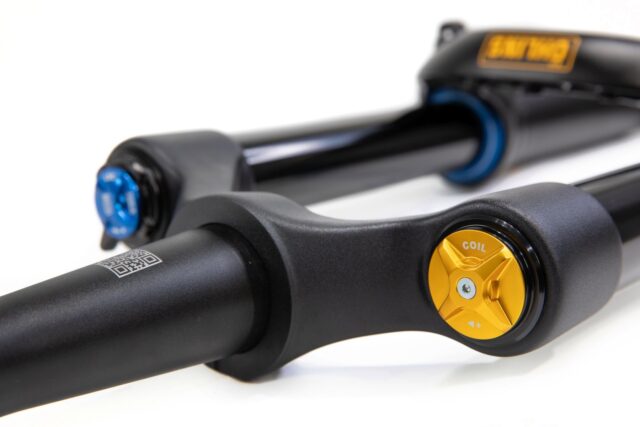
Intro
Modern air springs are quite refined and do an impressive job of providing a more sensitive and linear spring curve than air springs of the past. Still, there are plenty of folks who prefer coil-sprung options for their promise of lower maintenance, fewer seals for less friction, and ability to deliver a truly linear spring characteristic. These reasons have led to the persistent popularity of coil shocks, while forks have primarily moved toward air springs.
Despite that trend, there’s still a subset of riders seeking coil options for their forks, as shown by the success of several aftermarket options like the Vorsprung Smashpot. However, due to modern air spring designs, moving to a coil spring often means that the fork cannot be converted back to air due to risk of the coil scoring the inside of the stanchions (which most air springs rely on as a sealing surface), making it a consequential decision to make the switch.
Ohlins’ cartridge-based air spring means that is not a concern, and Ohlins is capitalizing on that with their Coil Spring Kit, now available for the RXF38 m.2 Enduro fork and DH38 m.1 Downhill fork. Read on for the details, and have a look at our Flash Review for our initial thoughts now that we’ve had a chance to install one in an RXF38 m.2.
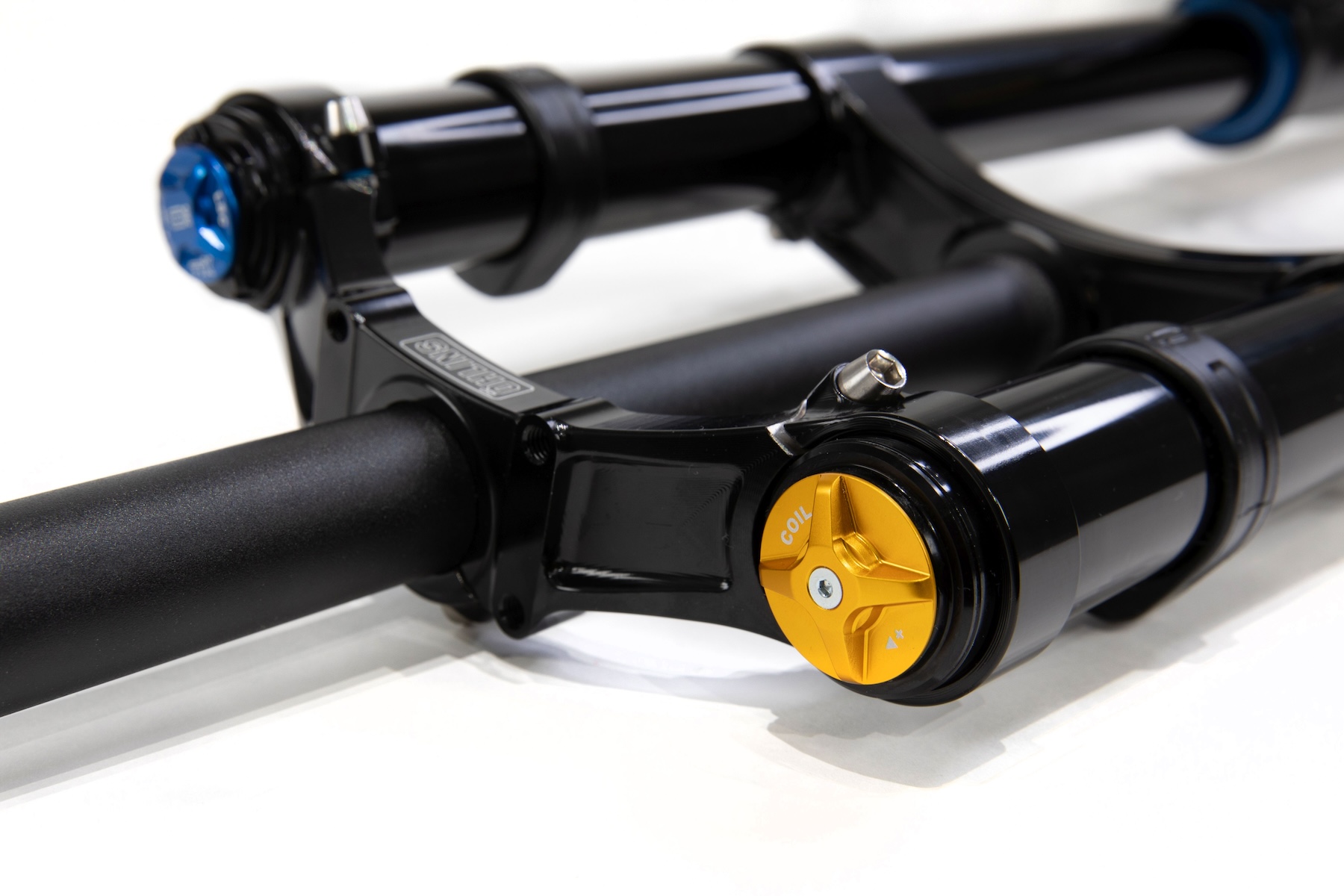
Design
Ohlins’ commitment to coil suspension carries over from their powersports legacy, with their first and arguably still flagship mountain bike shock being the coil-sprung TTX. They were also one of the few manufacturers making high-end coil forks with their RXF36 m.2 Coil, but supply chain issues a couple of years back disrupted availability of that version as an out-of-the-box option. Fortunately for coil spring enthusiasts, that pullback from coil-sprung forks was brief, and a Coil Spring Kit is now available for the RXF38 m.2 and DH38 m.1.
Despite advancements in air suspension, coil shocks remain quite popular as a rear suspension option — and for good reason. While air springs are infinitely adjustable, they inherently require a number of dynamic seals to keep the air where it belongs. A coil setup does not, meaning that the spring assembly often has a good bit less friction. Coil springs’ inherent simplicity also means that there are fewer seals to wear out, reducing service needs. Additionally, coil springs offer a linear rate of compression (unless progressively wound), meaning that they can feel incredibly consistent in their support through the travel.
The lack of coil forks on the market mostly comes down to the tradeoffs. Air forks require just one adjustable air spring design, whereas a coil requires multiple coil springs be available to account for different rider weights. Additionally, the larger real estate of a fork leg versus a rear shock means that air springs can be made larger and more linear, theoretically achieving closer performance to that of a coil without requiring the added weight of the rather large coil spring required to cover the fork’s travel range.
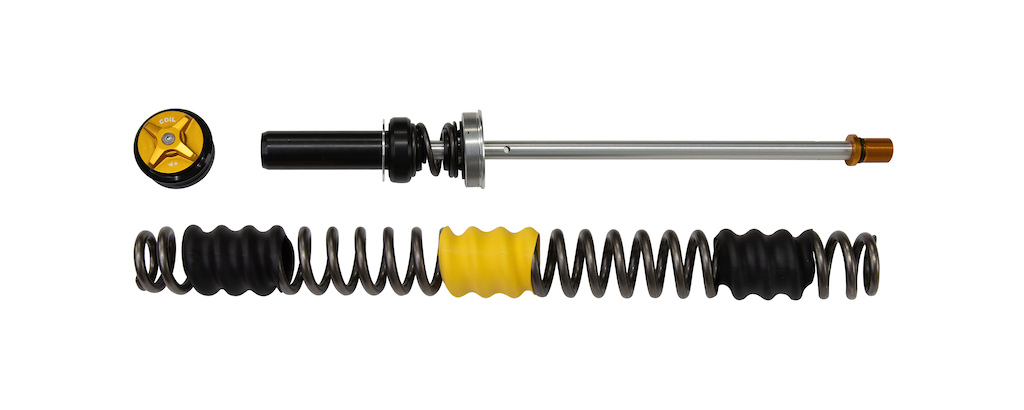
Moving on to the Ohlins Coil Spring Kit itself, it consists of a top cap and lower shaft assembly, which includes a spring retainer and top-out spring. Springs have to be purchased separately, with seven options available in 5 lb/in increments to suit riders from 140 to 260 lb (63.5 – 117.9 kg).
The RXF38 m.2 and DH38 m.1 kits are different in that the DH38 m.1’s longer stanchions require a spring perch extender at the top cap side, but the two kits share the same springs. It’s worth mentioning that installation of the Coil Spring Kit requires removing and replacing a lower cap on the stanchion with a pin spanner tool. Ohlins recommends their own, which costs a pretty penny at $52 and has some wrench flats for ease of use, but an adjustable pin spanner tool or some circlip pliers could likely do the job as well.
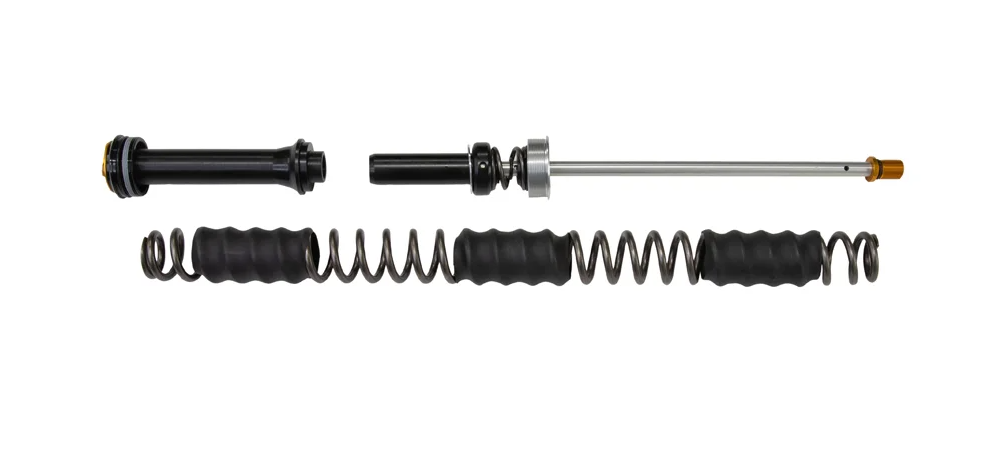
As mentioned above, Ohlins’ air spring is a self-contained cartridge. That means that, unlike other air springs that use the stanchion as a sealing surface, possible damage to the inner stanchion surface isn’t an issue if a rider wants to go back to air from the coil kit. While we imagine most folks will pick one spring setup and stick with it, it adds flexibility for folks who might be coil-curious and tempted by the relatively reasonable price of the Ohlins Coil Spring Kit.
FULL REVIEW
The Öhlins Coil Spring Kit is one of the only OEM-offered conversions on the market for mountain bike forks, and it’s also the only one we’re aware of that allows for easy conversion back to an air spring.
But does the often-hyped performance of a coil spring make sense in Öhlins’ RXF 38 m.2 Enduro fork, and does that performance come with meaningful tradeoffs? We spent a few months finding out for ourselves.
[For reference: Vorsprung’s Smashpot uses enough spring isolators to go back to the stock air spring in some applications, but conventional coil spring kits tend to scratch the inside of the fork stanchions, preventing an air spring from properly sealing after being used as a coil. Öhlins gets around that by having a self-contained air spring cartridge that doesn’t seal against the stanchion.]
Setup
Zack Henderson (6’, 165 lbs / 183 cm, 74.8 kg): I unpacked the details of the install and initial ride impressions in our Flash Review, but I want to emphasize again that the Öhlins Coil Spring Kit is an easy item to install. The process is the same between the kits for the RXF 38 m.2 (which we tested) and the brand’s DH 38 m.1 dual-crown fork. The springs are also interchangeable, despite the slightly different kits (the kit for the DH 38 m.1 is longer to accommodate the dual-crown format and extra travel.)
Because of Öhlins’ self-contained air spring cartridge, the swap is as simple as pulling out the air spring, replacing the threaded insert at the bottom of the stanchion with the coil kit, dropping in the spring and top cap, and re-installing the lowers.
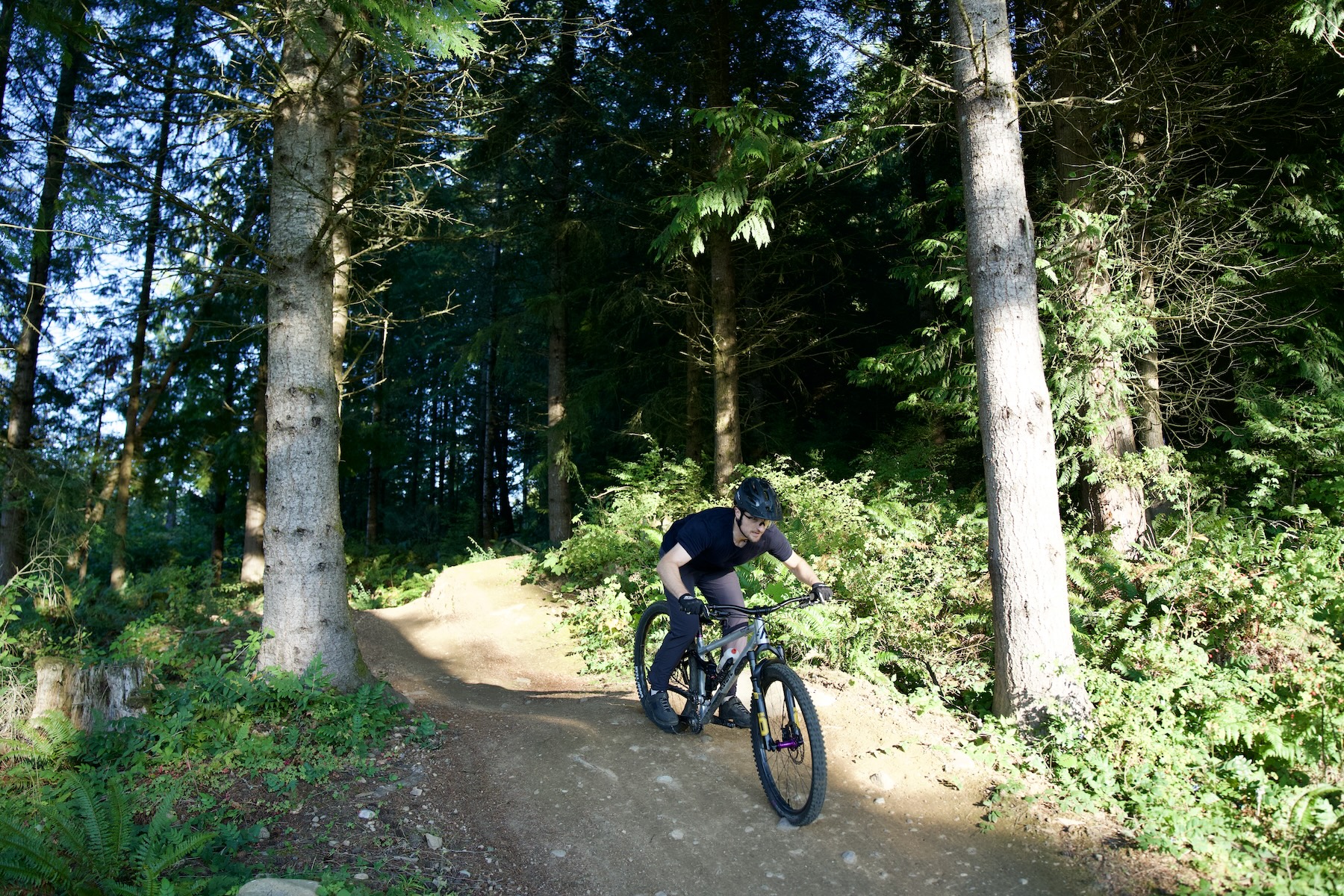
The $52 Öhlins-supplied pin tool for removing the threaded insert is a nice item and makes the installation a bit easier, but it’s likely not entirely necessary — a simple pin spanner will do the trick.
While we ran the Coil Kit in the 170 mm travel setting for the whole test, it’s worth noting that the kit is travel adjustable. The DH 38 m.1 can be adjusted between 160–200 mm, and our RXF 38 m.2 kit has a rather wide range of 130 – 180 mm (find me someone who wants a 130mm-travel fork with 38 mm stanchions and a coil spring; I have some questions for them).
David: Hi!
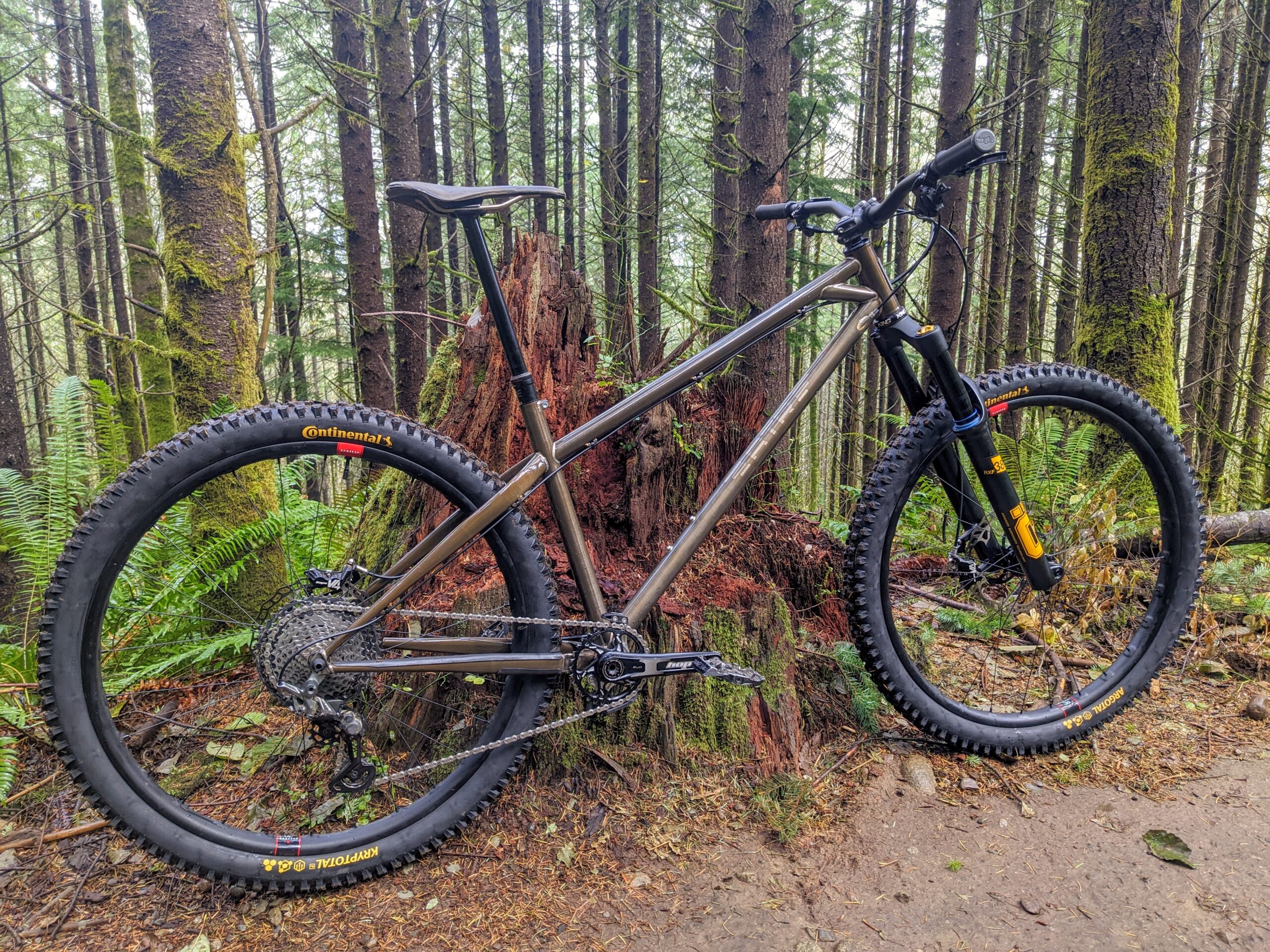
I swear we didn’t set that up — Zack wrote his parts before I chimed in. I was running the RXF 38 with the stock air spring in that photo, and am now running a Manitou Mezzer on there, but I have given a 38mm-stanchioned 130mm-travel fork a whirl. But let’s get back to what Zack was saying…
Zack: The main spring shaft has holes drilled along its length for each travel position, and adjustment is done by pressing out a pin in the lower spring seat, moving the lower spring retainer to match up with the position along the shaft for the travel you want, and re-installing the pin in the spring seat.
While they need to be purchased separately from the Coil Spring Kit itself, Öhlins has done well to provide springs in tight, 5 lb/in increments ranging from 40 lb/in to 70 lb/in. Öhlins says that range covers rider weights from 140 to 260 lbs / 63.5 to 117.9 kg. I settled on the 50 lb/in spring (at 170 mm travel), which is slightly firm for my weight but felt about right for the faster, rougher trails of late summer. While there is a preload dial at the top of the fork, preload really only affects initial firmness, so there’s still the general issue for some folks of being in between spring rates.
On the Trail
Zack: Our First Look talked a bit about the rise in popularity of coil-sprung rear shocks, while coil-sprung forks have remained a more niche option. My hesitation around trying a coil-sprung fork setup has historically been that the coil mars the inside of the stanchions and eliminates the option of going back to an air spring — and the weight gain from other coil kits is often a whole pound or more. With the Öhlins Coil Kit, the weight gain was just under half a pound (208 grams, to be exact), and I still had the option of going back to an air setup if the coil wasn’t my jam.
Right off the bat, the reduced friction of the coil setup is quite apparent. The fork eases into its travel very smoothly, and while there are still plenty of seals in the system overall (dust wipers and damper seals), the small-bump compliance was impressive despite the 50 lb/in spring being slightly firmer than recommended for my weight.

The relatively high damping levels in the RXF 38 m.2’s TTX18 damper mean that it’s still not the most buttery-feeling fork, but the coil spring definitely improves compliance while still retaining the support that comes with the fork’s firm damping.
Speaking of support, perhaps the biggest area of difference between the stock air setup and the Coil Kit is the amount of midstroke support on offer. While air springs have made major strides in providing more support in the middle of the travel, the truly linear nature of a coil spring still feels like a boost in that respect. Of course, removing volume spacers and adding air pressure can help get more support out of an air spring setup, but often at the expense of small-bump sensitivity. To address this, some brands have developed fork air springs with two positive air chambers, such as the stock Öhlins spring for the RXF 38 m.2 — check out our Full Review of the standard RXF 38 for more on that.
David: I’m in full agreement with Zack so far. Like him, I preferred the firmer 50lb/in (8.8 N/mm) spring over the 45 lb/in (7.9 N/mm) option at 170 mm travel, despite the latter being closer to Öhlins’ recommendation for my weight (165 lb / 74.8 kg). Small-bump sensitivity is definitely better with the softer spring, and while I only recall one truly harsh bottom-out event with it, I found myself deeper in the travel than I wanted to be a good bit of the time, and I preferred the added support of the 50 lb/in spring.
Even at that firmer spring rate, the small-bump sensitivity of the RXF 38 is improved by the coil conversion, and the midstroke support is excellent. There is, of course, not much of an appreciable ramp-up deeper in the travel, like you’d get from an air spring to one degree or another. Still, the ability to run a firmer and more supportive initial spring rate than you would in the air-sprung version while still getting a bump in initial sensitivity goes a long way toward making up for that, particularly as far as bottom-out resistance is concerned.
Zack: With the coil spring setup, the added midstroke support was most clearly on display in really steep terrain, where the dynamic ride height of the fork tends to be a bit lower while your weight shifts onto the front wheel. In those cases, the coil spring seemed to hold my RXF 38 m.2 up a bit higher in the travel, providing a slightly taller front end — a boon to confidence in steep terrain. In my case, I was able to open up my high-speed compression settings by a click while still feeling like I had adequate support, giving the fork a more plush feel on repeated hits with a bit less feedback through my hands.
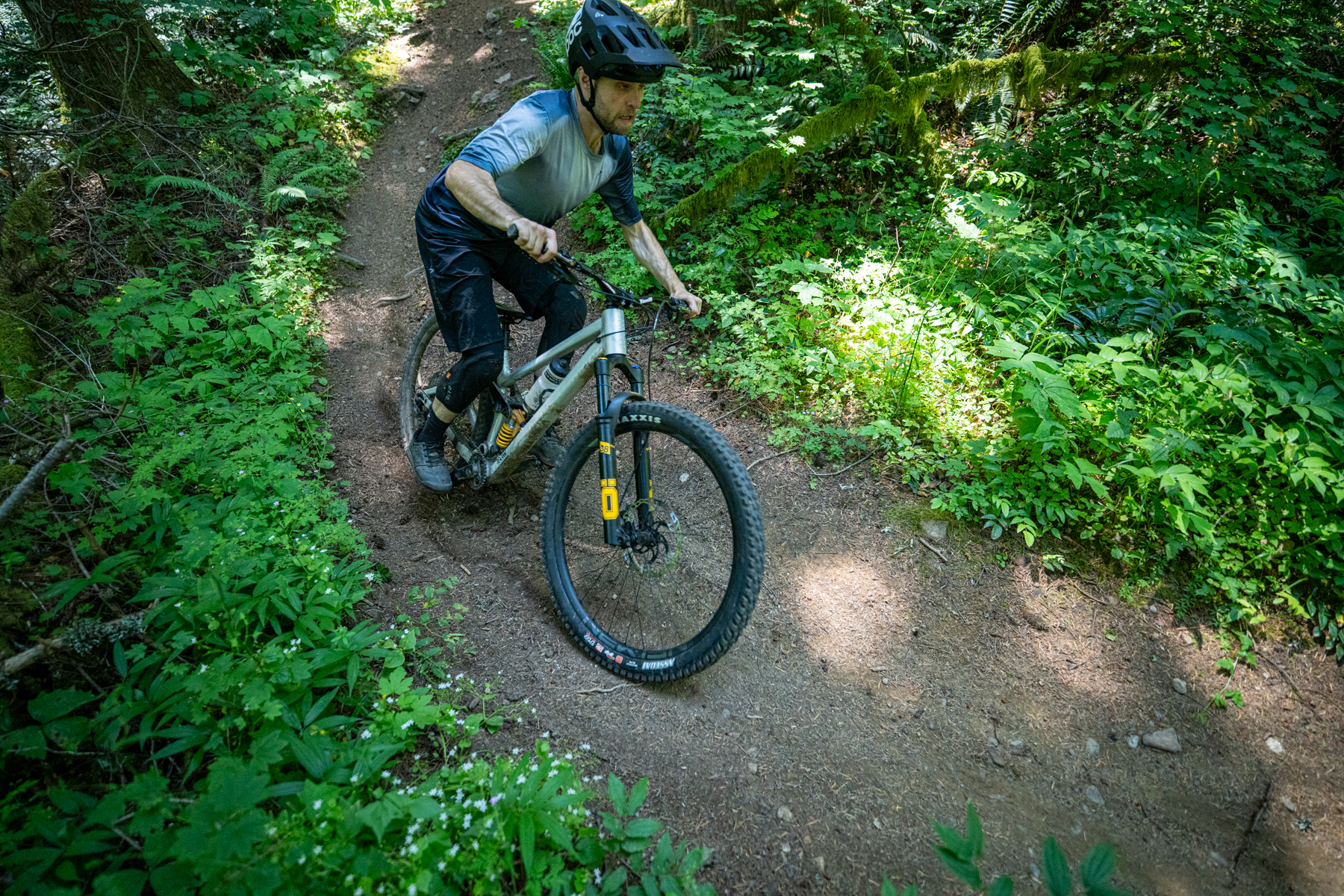
Of course, the tradeoff for that linear spring curve is that a coil spring alone doesn’t offer much in the way of bottom-out support. Aftermarket coil spring kits like the Vorsprung Smashpot and ACS3 from Push both have taken different approaches to providing additional bottom-out support, but the Öhlins Coil Spring Kit doesn’t. That’s likely a big part of its relatively reasonable price tag and lower weight penalty relative to those other kits, but it does mean that bottom-out events are a bit more frequent. While it felt a touch too firm for my weight at slower speeds, the 50 lb/in spring also meant that I didn’t bottom out excessively — dropping to a 45 lb/in spring would have improved comfort on repeated hits, but I suspect bottom-out events may have become a bit too regular.
There were a couple of other downsides to this Coil Kit, too. I enjoyed the coil’s increased mistroke support and initial sensitivity, but the extra half pound of heft paired with the less lively feel of the coil spring had the front end of my bike feeling ever so slightly more lethargic. In the same way that the coil spring setup seemed to deaden bigger repeated hits, the air spring seemed to have a more energetic feel, likely due in part to its progressive nature. This tradeoff was worth it on some really rough and fast trails, but for my preferred everyday riding, I missed the more dynamic feeling of the air spring. Because the air spring is so easily adjusted, I can also precisely dial in the feel I prefer for changes in terrain.
David: My take on this part is a little different from Zack’s. With the coil conversion, I wound up running the RXF 38’s rebound adjuster a couple of clicks more open with the coil spring than I do with the air one, in order to help it more quickly recover from big compressions. With that tweak made, I didn’t feel like I was losing much pop. The added weight is there, but I didn’t really notice that a ton either.
The biggest drawback I noticed to the coil spring was that it made it a bit harder to achieve a fully balanced feel between the front and rear suspension, depending a fair bit on the bike in question and what was going on with its rear suspension.
In a vacuum, I like the performance of the coil spring a lot. However, especially on a more progressive bike with an air shock, the trickier part is that the spring curves just feel very different between the front and back of the bike, and the way the chassis pitches under simultaneous big compressions at both ends feels harder to predict. (For reference, the Privateer 161 I tested with this Coil Conversion kit is almost 40% progressive, and I’ve been testing it with the stock Fox Float X2 air shock.)
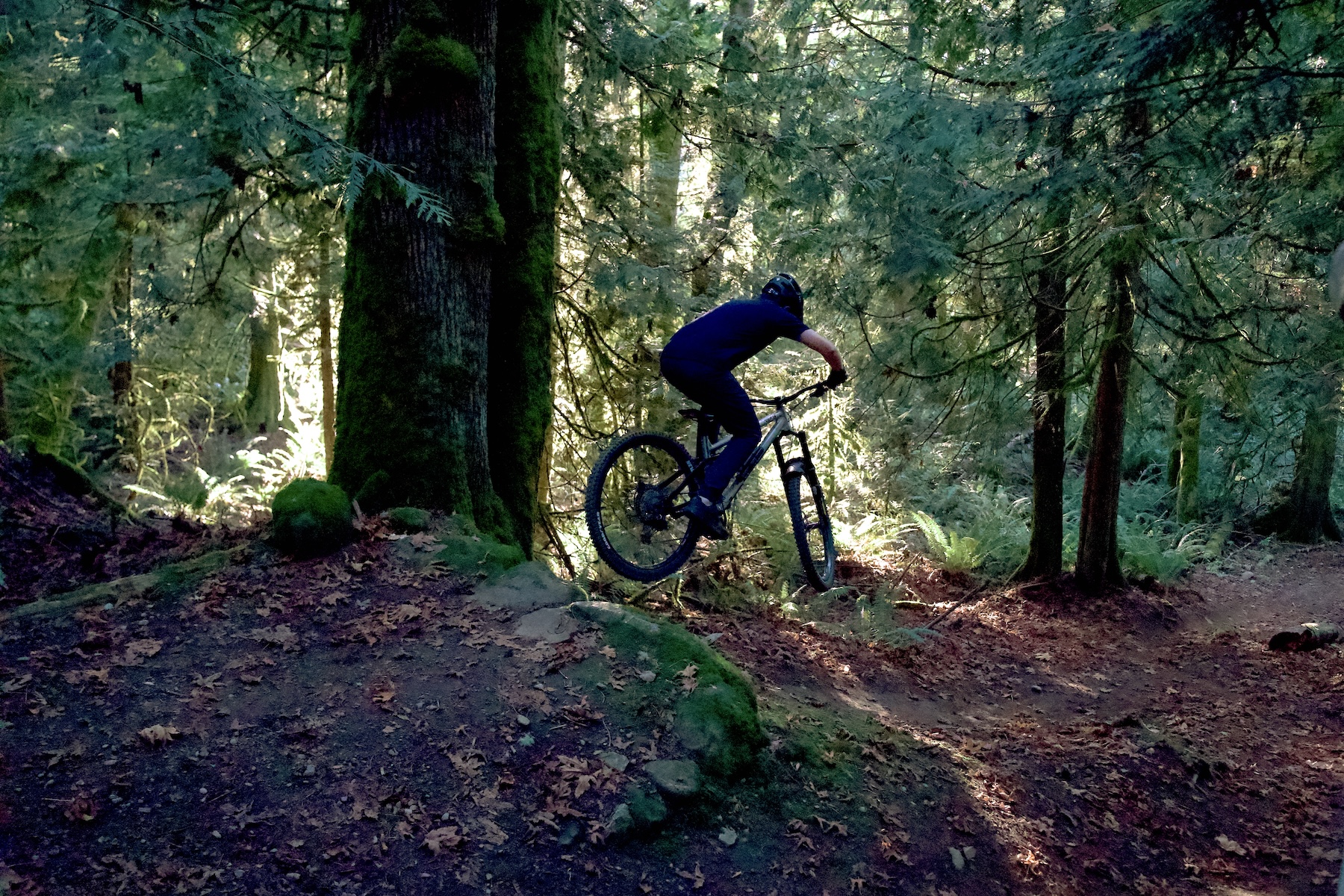
Would I readjust if I was only riding the RXF 38 Coil on the 161 as my only bike, rather than swapping back and forth between a bunch of different review-bike setups? Maybe, but I made a concerted effort to ride that combo consistently for a number of consecutive rides, and I still felt about the same at the end of it. The sensation of the front-to-rear balance being off was mostly gone on the RAAW Madonna V3 (26% progressive, tested with an Öhlins TTX 22 coil shock), but that balance still felt a bit different than with the air spring in the RXF 38.
The sensation of the balance being off felt most pronounced on really steep bits of trail when taking a big compression at not especially high speeds — such as pulling up for a tight, technical drop in the middle of a chute. The midstroke support from the Coil Kit is very good, but it feels more eager to dive into the deeper part of the travel (call it the 80-90% range) and pitch the bike forward a little more than I wanted in those circumstances.
Big picture, I think the way that folks are going to feel about that tradeoff depends a ton on their priorities, riding style, and the bike they’re riding.
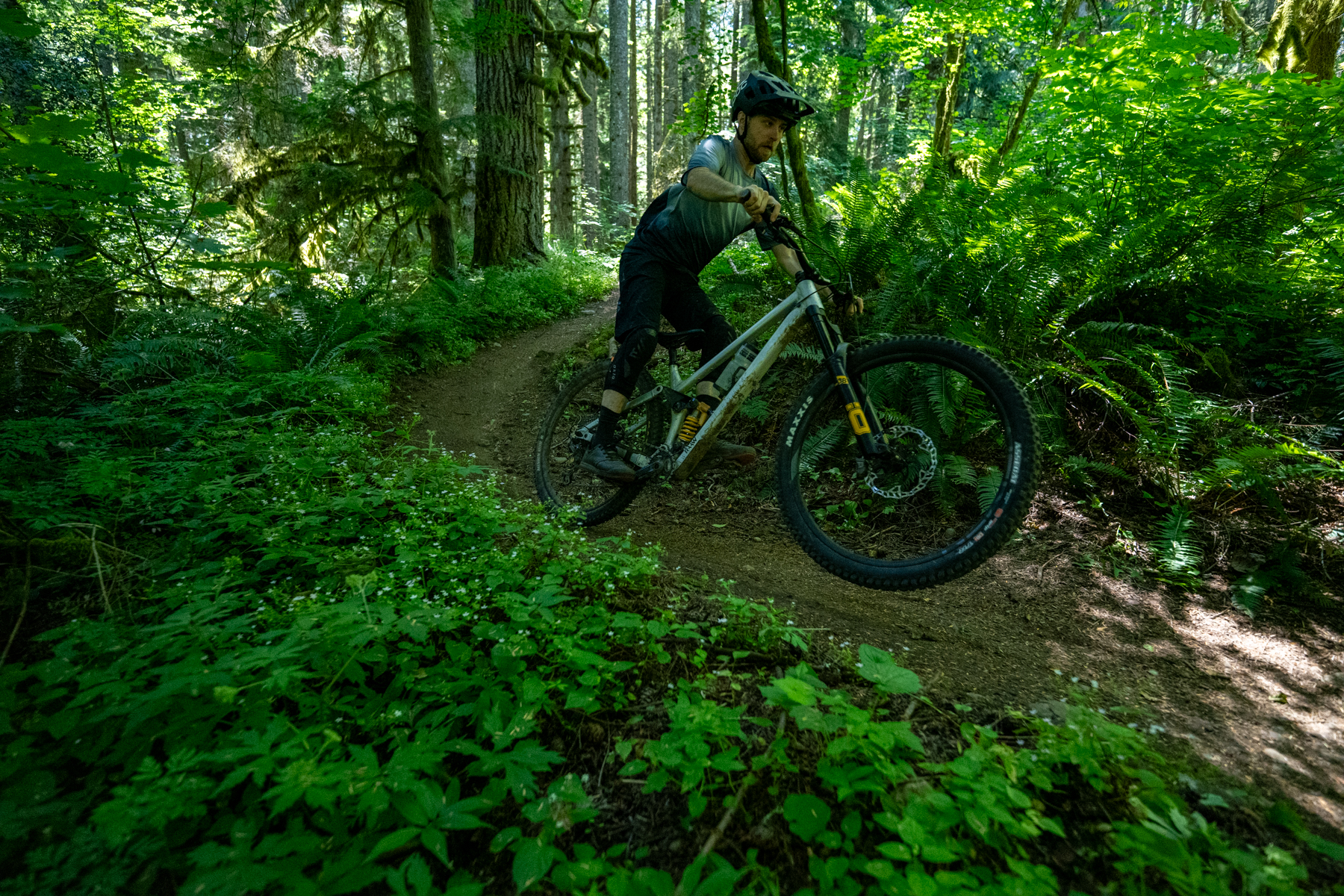
For example, if you’re spending a lot of time on trails that aren’t super steep or fast but are generally pretty rough, it would be easier to run a comparatively softer spring rate and take maximum advantage of the improved small-bump sensitivity that the coil spring offers. If your main trails are wide open and fast, and you’re more interested in chasing traction and comfort over fine-tuning the front-to-rear balance of your suspension performance, there would be a good case for the coil conversion there, too. As with most things, there are tradeoffs, but they’re absolutely worthwhile ones for the right folks.
Zack: The final drawback of the Coil Kit was the added noise. Despite three segments of shrink wrap around the spring and ample greasing before installation, the shrink wrap would shift after repeated compressions and the fork would develop a rather loud rattle as the spring knocked around inside the stanchion. I’m particularly picky about rattling and unwanted noise, but coming from the virtually silent performance of an air spring, I found the rattle a bit maddening. Pulling the coil back out of the fork and repositioning the shrink wrap was a two-minute fix, but partway through the next ride, the rattle would start to rear its head once again. I want to clarify that this isn’t something unique to the Öhlins Coil Kit, as nearly all coil forks I’ve ridden have demonstrated some tendency to rattle over time, but it’s a worthwhile callout when comparing the air and coil options for the RXF 38 m.2.
David: I didn’t have such notable issues with noise, but I also tested the Coil Kit before Zack; it’s possible that the shrink wrap loosened up and started to move around more during his portion of the testing than it had in mine. I’ve had decent success adding additional shrink wrap on other coil-sprung forks of yesteryear to combat similar issues, but haven’t tried with this setup.
Durability
Zack: Part of the appeal of a coil spring is its simplicity — a coil spring doesn’t require routine maintenance, disposable items like rubber seals, etc. In that respect, the Öhlins Coil Kit further reduces any need for maintenance beyond lower leg services and annual damper rebuilds. It also helps that the Öhlins Coil Kit seems quite well made, with quality materials and a simple, robust design that doesn’t include the added components of the anti-bottom-out features on the Vorsprung Smashpot and Push ACS3.
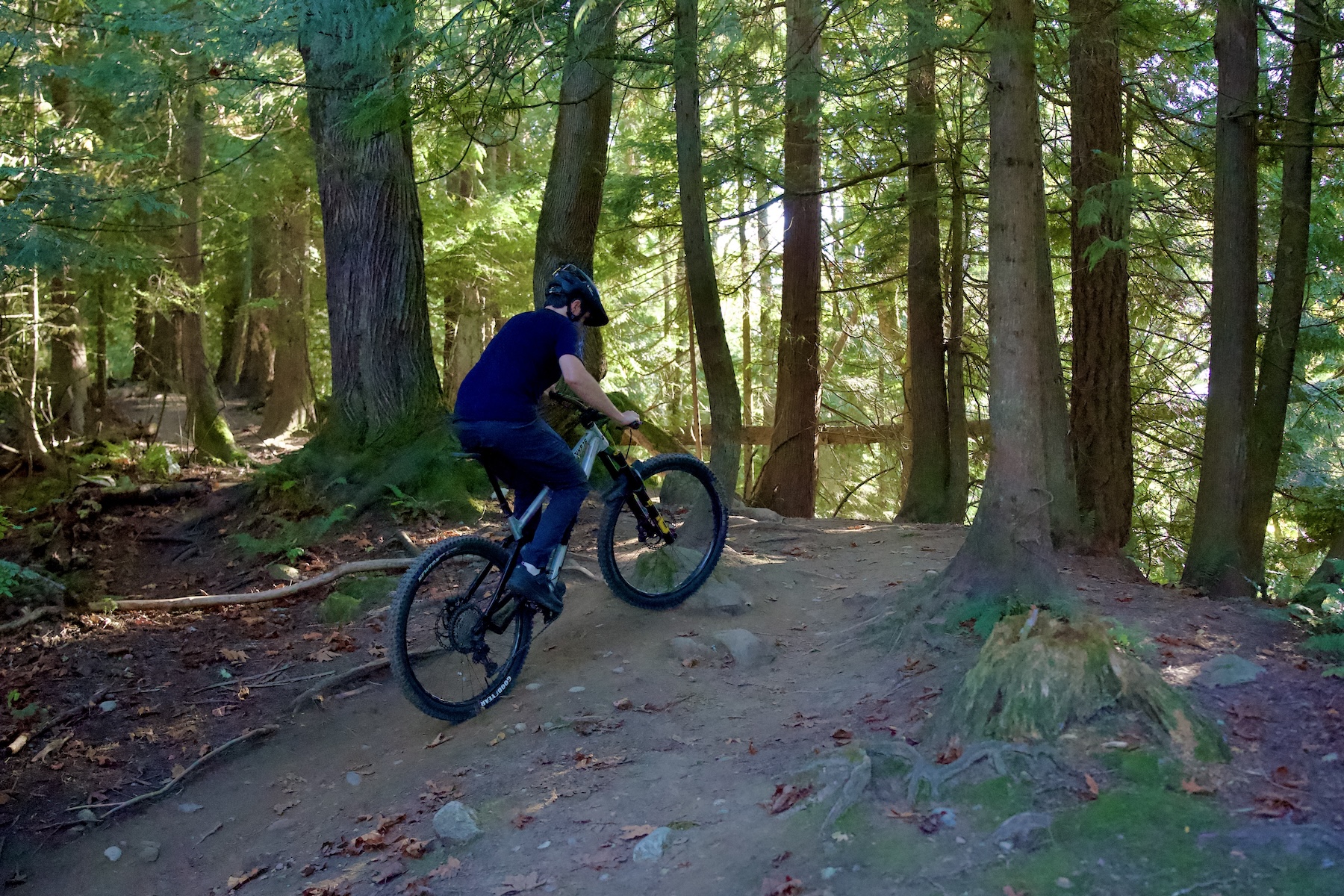
David: I think the set-and-forget nature of a coil spring is maybe a bigger upside than the potential for reduced maintenance. It’s probably true that the coil will degrade more slowly in its performance than an air spring would as the last service fades into the distance, but going to a coil spring doesn’t change the need to do lower leg services, replace dust wipers, and so on. But not needing to check and maintain air pressure is great, as is the consistency of a coil spring across varying temperatures and long, heat-creating runs.
Who’s It For?
Zack: With the caveat that Öhlins’ forks tend to be slightly spendy relative to other brands, the Öhlins Coil Spring Kit presents a compelling value for coil-curious riders. It doesn’t require a huge investment, is simple to install, and comes at a minimal weight penalty compared to other aftermarket options. It’s also easy to go back to an air spring, further reducing the consequences and cost if it turns out that a coil isn’t for you.
The question of whether a coil spring is the right choice is a more complicated one. At the expense of some weight and adjustability, the coil-sprung RXF 38 m.2 offers great sensitivity and standout midstroke support, along with a more ground-hugging feel that caters well to high-speed, rough terrain. If composure for fast and rough riding is the top priority, it’s a compelling choice. On the other hand, if a more lively and tunable fork for more variable terrain is the top priority, the Öhlins air spring is a top performer, despite being more complex to set up.
David: Fully co-signed.
Bottom Line
Coil springs carry some tradeoffs, but for riders who prioritize small-bump compliance and ample midstroke support, the Öhlins Coil Spring Kit is a compelling option that reduces both the cost and the weight typically associated with coil conversions. While coil-sprung forks are likely to remain a more niche item, it’s great to see Öhlins creating more choice for riders who know they want a coil setup, while also creating a relatively easy opportunity for coil-curious folks to try one out.
